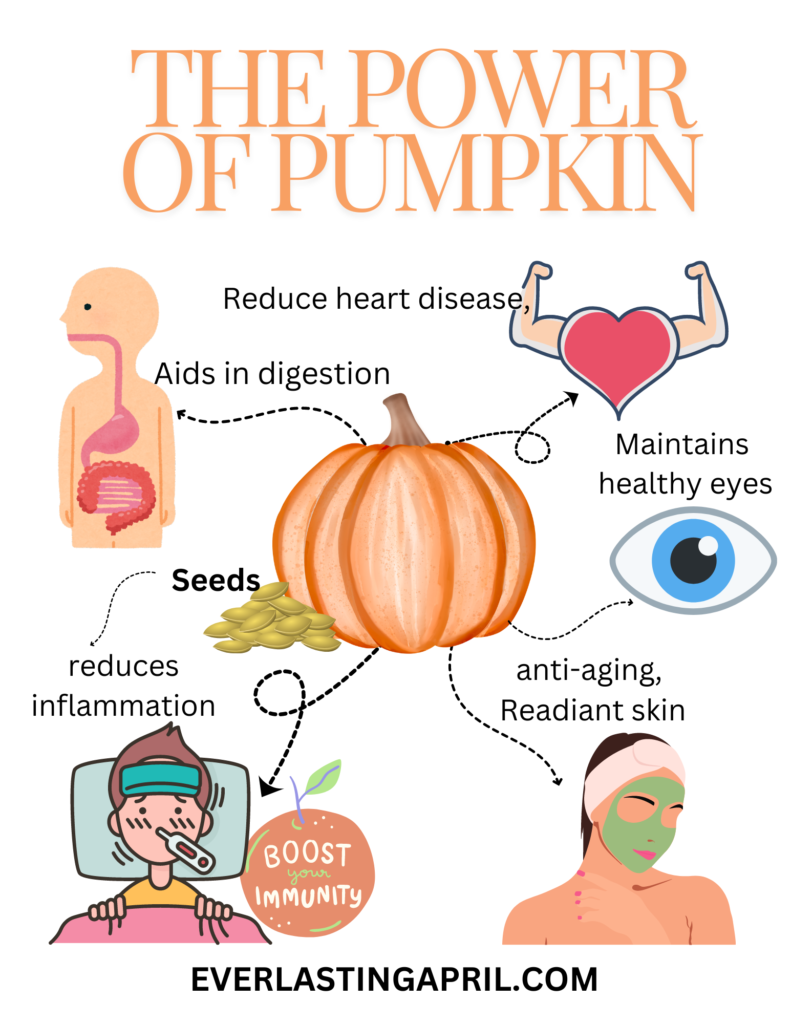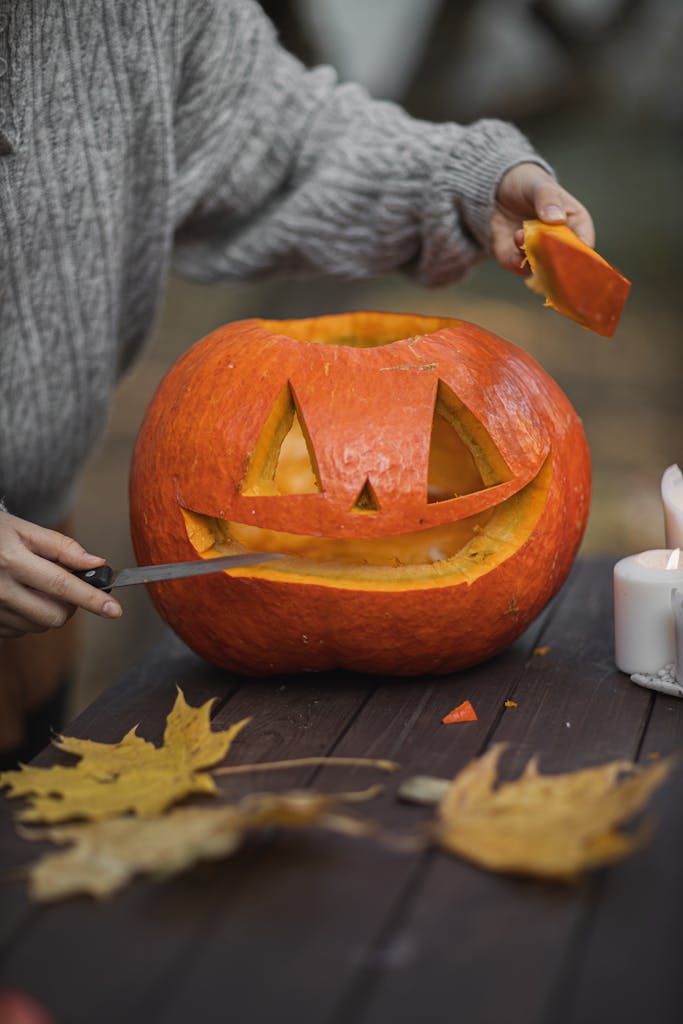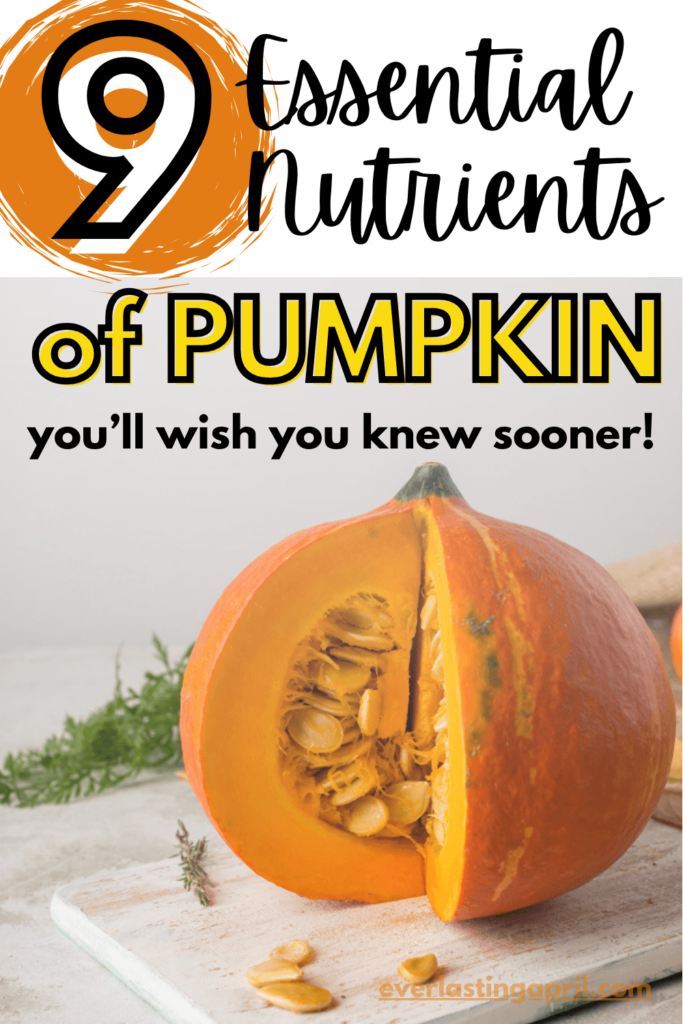5 Powerful Health Benefits of Pumpkin
Affiliate links may be in this post.
If you are from North America or Europe, pumpkins bring up memories of Thanksgiving , Halloween, and Fall Festivals. But did you know that people all over the world are getting the health benefits of pumpkin in their everyday diet?
Discover that pumpkins are more than just decorative fall staples or ingredients for pies—they are nutritional powerhouses, with super health benefits, and are being used as a low-carb alternative to traditional dishes.
I have always loved pumpkins as a symbol of family time, Fall harvest and yummy foods! As the weather cools and pumpkin dishes begin to appear, it’s the perfect time to explore the health benefits of pumpkin. And if you are anything like me, you may be interested in exploring their origins, and the many ways we can incorporate this versatile fruit into our lives.
Table of Contents
The History and Origin of Pumpkin
Now of course, since I am a former teacher, you know I will give you the history and origin on things I talk about. It’s in my nature to educate! The pumpkin (Cucurbita pepo) is believed to have originated in Central America over 7,500 years ago, where it was first cultivated by the Paleo-Indians. The oldest pumpkin seeds have been found in Mexico and date back to between 8,000 and 10,000 years ago.
Pumpkins are a member of the Cucurbitaceae (gourd) family and are native to the Americas. And you might be surprised to learn that pumpkins are actually FRUITS like all squashes because they grow on vines.

Humans have used pumpkins as a crucial food source, eating the flesh and seeds, and even drying the rind to create containers or bowls, the same way we use gourds today. People knew how to use pumpkins medicinally to treat conditions like wounds and digestive issues.
European explorers brought pumpkins back to Europe, where they eventually became a popular crop. Irish and English farmers used their root vegetable carving skills to make Jack-o-Lanterns. Over time, pumpkins became synonymous with autumn, harvest festivals, and Halloween because of the time of year their crop is available.

Today we see pumpkins of all shapes and sizes used in Fall décor. I will add some to my doorstep with chrysanthemums (mums) as a welcome symbol. During Halloween, pumpkins are carved with spooky faces, that are hallowed out for a candle to be placed inside. Today many North Americans have even stopped buying real pumpkins for décor since they just get disposed of every year. The benefit of using real pumpkins is making use of all it’s parts.
Pumpkins play a prominent role in both culinary traditions and seasonal decor in the United States and around the world, like Asia, Europe, Australia, Israel, and Mexico. Read about other countries that use pumpkins here.
Read this blog post for more on the 5 Fall Spices for a DIY Natural Home Fragrance
Power Of Pumpkin FREE Download

Grab this downloadable chart showing you the Health Benefits of Pumpkin:
Did it ever occur to you that pumpkin is healthy to eat? Since we mostly associate pumpkin with sugary pies and desserts, it’s hard to think of them as healthy. However, there are numerous health benefits of pumpkins to your body thanks to their nutrient-dense composition.
Here are some key reasons why adding pumpkin to your diet can be great for your health:
5 Powerful Nutritional Health Benefits of Pumpkin
1. Rich in Essential Vitamins and Minerals
Pumpkin is an excellent source of essential nutrients. This list shows how many areas of the body pumpkin is good for.
- Vitamin A: One cup of cooked pumpkin contains more than 200% of your daily recommended intake, which is essential for maintaining healthy vision, skin, and immune function.
- Vitamin B: Supports liver health, brain function and nervous system regulation
- Vitamin C: This antioxidant boosts immune function and helps fight off colds, which is especially important during the fall and winter months.
- Vitamin D: Supporting bone health, immunity, brain cell function
- Vitamin E: Supports skin, wound healing, vision and is an antioxidant
- Vitamin K: Is a neuroprotective vitamin that also supports blood clotting and bone health
- Protein: Pumpkin is not a good source of protein with less than 2 grams per cup
- Fiber: Pumpkin is a good source of fiber with 7 grams in 1 cup.
- Carbohydrates: Pumpkin is relatively low in carbs (4-12 grams per 100 grams). This makes pumpkin a great seasonal low-carb alternative to starchier sides like rice, potato and pasta.
- Minerals: Iron, Manganese, Copper, and Potassium-all of which can support bone health, muscle function, immunity, heart health and blood pressure
2. High in Antioxidants Supporting Immunity
Pumpkins contain a wealth of antioxidants, including beta-carotene, which gives pumpkins their vibrant orange color. Beta-carotene has been linked to a reduced risk of chronic diseases like heart disease and cancer.
The seeds have even been linked as a potential treatment for prostate problems in men. Read more on pumpkin seeds and men’s health here. The antioxidants in pumpkin also help protect cells from damage caused by free radicals, reducing inflammation and supporting overall health. This is the real power of pumpkin!
3. Supports Digestive Health
Pumpkin is rich in dietary fiber, which is crucial for digestive health.
Eating fiber-rich foods like pumpkin can help prevent constipation, support regular bowel movements, and even reduce the risk of colon cancer. The fiber in pumpkin also promotes feelings of fullness, making it an excellent food for weight management.
4. Boosts Heart Health
The combination of potassium, fiber, and antioxidants in pumpkins supports cardiovascular health.
Potassium helps lower blood pressure by counteracting the effects of sodium, while fiber aids in reducing cholesterol levels. Additionally, the beta-carotene found in pumpkins may reduce the risk of heart disease by protecting the heart and blood vessels from oxidative stress.
5. Aids in Eye Health
Pumpkin’s high levels of beta-carotene, which the body converts to vitamin A, are vital for maintaining good eyesight. Vitamin A helps the eyes adjust to low-light conditions, reduces the risk of cataracts, and prevents age-related macular degeneration. Combined with the lutein and zeaxanthin present in pumpkin, these compounds protect the eyes from harmful UV rays.
Knowing pumpkin health benefits, we can incorporate them into daily diet with lots of recipes. Go to my other post on “7 Simple Pumpkin Drinks to Love” for tasty ways to add pumpkin to your diet.

Pumpkin Varieties for Eating
I really had no idea that you couldn’t eat the orange carving pumpkins until I tried once. It just didn’t taste good. It was lacking flavor and had a stringy texture. That’s why I have created this list of common pumpkins and which ones to buy for what reason.
Pumpkins come in many shapes, sizes, and colors. While some are grown specifically for ornamental purposes, others are perfect for cooking and baking. So head to your local farm stand or organic grocery store for a delicious assortment of pumpkins!
Pumpkin Varieties FREE Download
Here are a few common varieties: Download this!


Roasted & Salted Pumpkin Seeds, Pepitas
Buy Now →Seeds To Skin: Using The Whole Pumpkin
Pumpkins are actually a fruit, not a vegetable because they grow on a vine. Besides the flesh, here are several creative and health-conscious ways to use the whole pumpkin:
Pumpkin Seeds (Pepitas)

- Nutritional Benefits: High in magnesium, zinc, and healthy fats, pumpkin seeds are great for heart health, bone health, and boosting immunity. They also contain antioxidants that reduce inflammation and promote overall wellness.
- Prevent Parasitic Infections: According to the National Institute of Health, pumpkin seeds are being researched as possible medicinal plants due to their antimicrobial ability and they can reduce the worm burden in the intestines.
- How to Use: Roast pumpkin seeds harvested from a real pumpkin. Toss with a little olive oil, salt, and spices for a healthy snack. You can also add them to salads, smoothies, or granola. Not in the mood to make you own? No problem, I buy Roasted & Salted Pumpkin Seeds, Pepitas Give them a try!
The American Heart Association recommends a quarter cup of daily intake of pumpkin seeds as part of an overall healthy diet, which is approximately 30 g. This amount will provide you with a good amount of protein, healthy fats, fiber, zinc, selenium, magnesium, and other effective nutrients.
Pumpkin Guts (Stringy Flesh)

While the stringy flesh (often referred to as pumpkin guts) is usually discarded during carving, it can be used in several ways:
- Composting: Add pumpkin guts to your compost pile for rich, organic soil.
- Stock or Broth: Simmer the stringy flesh with herbs, onion, and garlic to make a flavorful pumpkin stock for soups or stews.
- Dog Food: puree and add a scoop to your dog’s food. It’s great for their fur and eyes!
Pumpkin Skin

Though the skin is often discarded, it’s edible in many varieties (especially when roasted):
- Nutritional Benefits: Pumpkin skin is high in fiber and nutrients like potassium and vitamin A.
- How to Use: If roasting a whole pumpkin, you can leave the skin on for added texture and flavor. In thinner-skinned varieties like kabocha, the skin becomes tender and delicious when cooked.

Pumpkin Flowers
Pumpkin flowers, though not commonly eaten, are edible and used in various cuisines:
- How to Use: These delicate blossoms can be stuffed with cheese or rice and lightly fried for a unique and tasty dish.
- Vitamins: Pumpkin flowers are high in calcium, iron, magnesium, niacin, potassium, riboflavin, thiamin, vitamin A, and vitamin C. They are also low in cholesterol, sugar, saturated fat, and sodium.
- Pumpkin Flowers can also be anti-inflammatory according to this article by MDPI.

Pumpkin Decorations
This is a big use for pumpkins. We love to decorate with this colorful squash in the Fall.
- Pumpkin Candles: Scoop out a small pumpkin, place a candle inside, and use it as a festive, natural lantern for your fall table.
- Centerpieces: Hollow out a pumpkin and use it as a vase for fall flowers.
- Table service: Scoop out a medium sized pumpkin and use as a serving bowl for soups and dips.
- Outdoor decorations: Assemble on a doorstep, or around a tree in the yard. Carve spooky faces, and add candles.
- Art Projects: Paint the entire uncarved pumpkin white, silver, gold, black, or your favorite color. Stencil or paint faces, images, scenery and use as indoor Decor.
Power Up Your Beauty Routine: Health Benefits of Pumpkin for Your Skin
Pumpkin’s rich antioxidants, vitamins, and enzymes make it a fantastic ingredient for skincare. Pumpkin is a powerful natural beauty ingredient.

Face Masks: Use pureed pumpkin as a base for a nourishing, anti-aging face mask. The enzymes in pumpkin help exfoliate dead skin cells, revealing more radiant skin. They contain Alpha Hydroxy Acids (AHAs) that can exfoliate the skin and reveal a brighter complexion. It also contains vitamin A, alpha and beta-carotene, vitamins C, K, and E, which can help with wrinkles.
Here is one of my teenagers and I with Pumpkin Face Masks, waiting for the results. First of all, it smells amazing! We left it on for 20-30 minutes while we sat by the fire and chatted about college.
After rinsing, I could feel an immediate difference in the softness of my skin. It is recommended to do this beauty mask weekly for Glowing Skin.

DIY Pumpkin Face Mask Recipe
- 1 Cup of cooked, pureed pumpkin (can be from a can)
- 1/8 tsp avocado or coconut oil
- 2Tbsp Honey
- Pinch of cinnamon
Directions for Use:
- Wash face to remove dirt, oils, makeup.
- Mix pumpkin face mask well and apply evenly with fingers
- Leave on for 30 minutes
- Rinse
Conclusion
Pumpkins are more than just a fall favorite—they’re packed with health benefits, from boosting heart health to improving vision and digestion. With a variety of edible pumpkins to choose from and many ways to use the entire plant, pumpkins are both a nutritious and sustainable choice for your kitchen and beyond.
Enjoy the recipes included in this post. Whether it’s their seeds, roasting their flesh, or using them in your garden, pumpkins are a versatile and health-boosting fruit that deserve a spot in your home this season.











